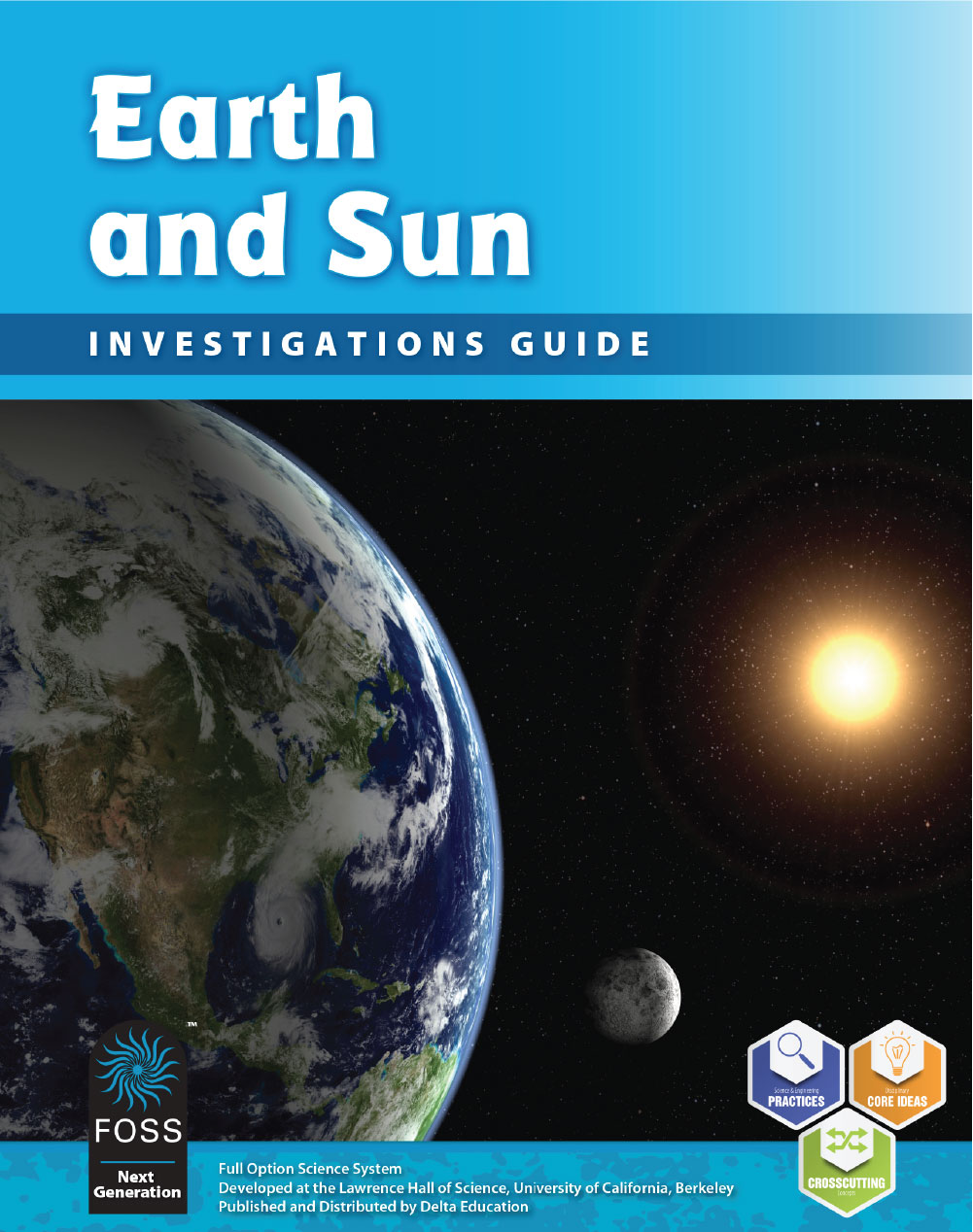FOSS Next Generation Earth and Sun
Grades 5

The Earth and Sun Module focuses on Earth and the Sun as a system. Students collect and analyze shadow data. They observe the changes in the Moon’s appearance over time. Then students explore the properties of the atmosphere, energy transfer from the Sun to Earth, and water cycling in Earth’s atmosphere.
Investigation 1: Sun and Earth
Students trace their shadows in the morning and afternoon in order to monitor the position of the Sun as it moves across the sky. Students make hourly records of the position of the shadow cast by a golf tee. They imagine an observer on Earth and position themselves around a lamp to discover that the rotation of Earth produces day and night.
Investigation 2: Planetary Systems
The class starts a Moon calendar, on which they record the Moon’s appearance every day for a month. Students grapple with the size and distance relationships among the Moon, Earth, and the Sun, and build a model of the Earth-Moon-Sun system. They are introduced to constellations as patterns of stars and simulate Earth’s rotation to observe the appearance of stars rising in the east and setting in the west.
Investigation 3: Earth’s Atmosphere
Students explore air by working with syringes and tubes to discover that air takes up space and is compressible. They are introduced to the atmosphere as a mixture of gases with properties that change with altitude above Earth’s surface. Students review local weather reports and determine the variables that combine to produce the weather.
Investigation 4: Heating Earth
Students investigate energy transfer on Earth. They investigate uneven heating by recording and graphing temperature changes when two earth materials absorb solar energy. They observe examples of energy transfer by radiation and conduction. Students observe convection currents in water as a model of what happens in air, and design solar water heaters.
Investigation 5: Water Planet
Students investigate systems to observe condensation on cold surfaces and determine the components of the water cycle. They explore the conditions that promote evaporation, and simulate the travels of a drop of water through the water cycle to explore the complexities of the process.